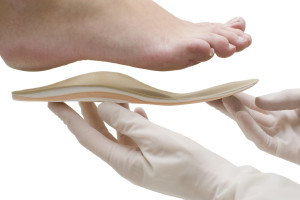By Nathan Graves, DPM, Indiana Podiatry Group
 A diabetic foot ulcer—or a chronic wound on the foot—is very common when you have diabetes. You may wonder why that is. For those who have diabetes, nerve function, blood flow and skin health is often compromised. So, if a person with diabetes gets a foot wound, he or she may
A diabetic foot ulcer—or a chronic wound on the foot—is very common when you have diabetes. You may wonder why that is. For those who have diabetes, nerve function, blood flow and skin health is often compromised. So, if a person with diabetes gets a foot wound, he or she may
not be able to feel it due to a lack of sensation in the foot. Then, with impaired circulation, it won’t heal properly. What may seem to be a minor blister on your foot can become a very serious problem if left untreated—and can even lead to amputation.
To prevent the worst-case scenario of amputation, it’s important to become familiar with this condition and be proactive with your health. Below is helpful information if you’re at risk of developing diabetic foot ulcers.
How do you know if you have a diabetic foot ulcer?
A foot ulcer is usually identified by inspecting your foot on a daily basis. You may notice a painful, red, swollen area on your foot that may show signs of draining. Keep in mind it’s common to have neuropathy (nerve damage that can cause numbness) with diabetes, so the pain may not be as apparent.
What are the best ways to prevent foot ulcers?
Prevention is key. Make sure you’re appropriately managing your diabetes because your blood sugar levels affect blood circulation. Daily foot inspections, proper shoes and early identification of potential problems are important to maintaining an ulcer-free foot. Everyone with diabetes should consult a podiatrist at least once a year. If your podiatrist identifies foot issues, you may visit more regularly for preventative care.
What is the importance of early treatment?
It’s always easier to heal a small ulcer than a large one. Seeking treatment early will help decrease your infection potential and chance of amputation. An approach that involves a comprehensive team of experts and specialized care is important to preventing and treating diabetic foot ulcers. We work closely with the experts at Riverview Health Wound Care to design personalized treatment plans for people with diabetic foot ulcers. Advanced technologies offered at Riverview Health Wound Care include hyperbaric oxygen therapy for faster healing and LUNA fluorescence angiography that helps pinpoint exactly why your wound isn’t healing.
Dr. Graves is dedicated to getting people back on their feet faster. His clinical interests include diabetic foot care, wound care, minimally invasive surgical techniques, diagnostic ultrasound, community and global medicine, and the delivery of responsible healthcare. To schedule an appointment with Dr. Graves for an evaluation, call 317.773.7787.
